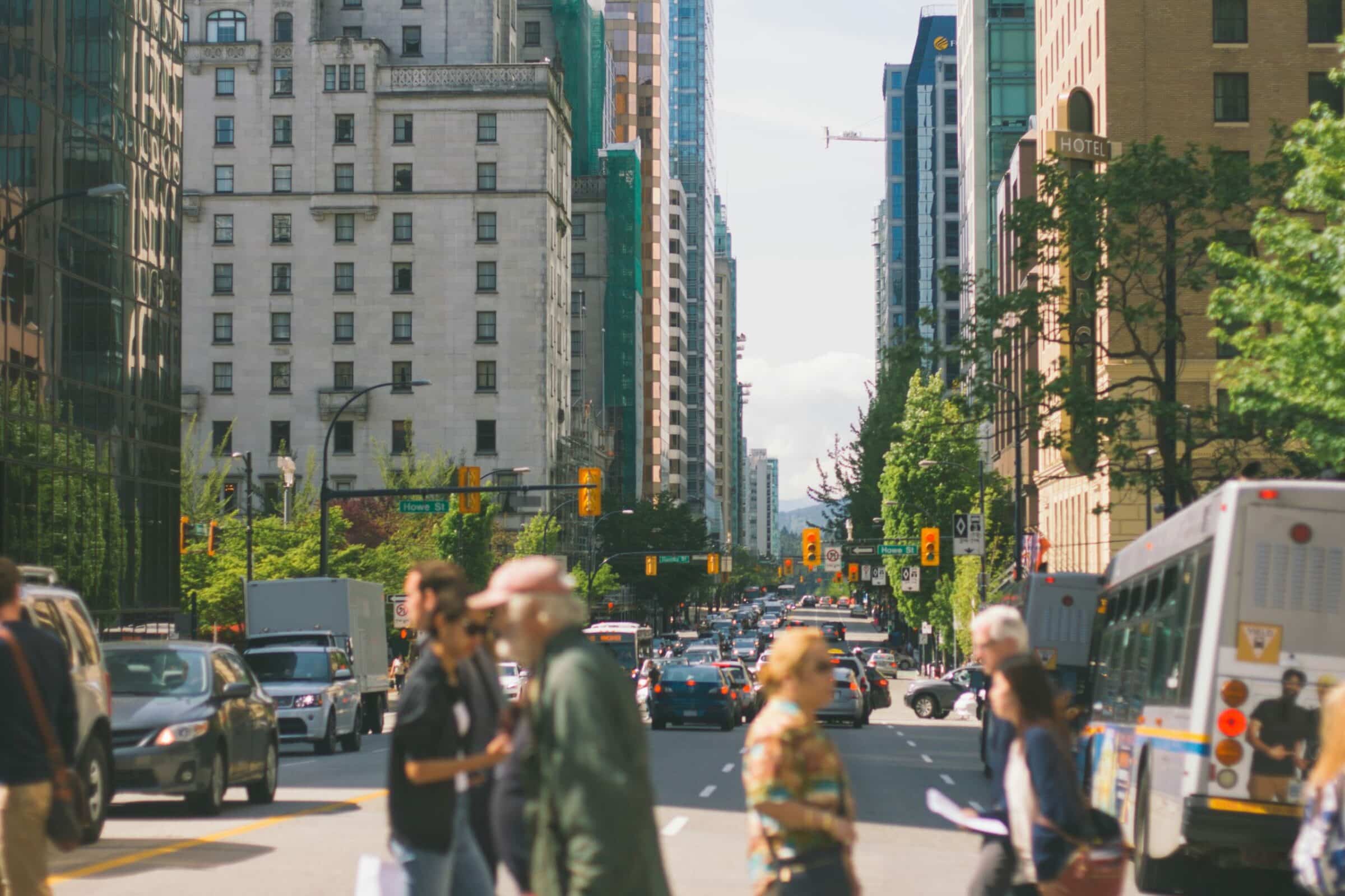Key takeaways:
- Creating strong relationships between public and private sectors, utilising smart technology, and engaging with citizens are just a few of the steps necessary to become a smart city.
- Smart cities seek to take advantage of these advances by using technology to create more efficient systems and services for their citizens.
- Implementing pilot schemes can help build momentum and encourage members of the public to get involved and support the smart city initiatives.
What is a Smart City?
A smart city, in concept, is an urban area that seeks to use IoT (Internet of Things) technology and data to improve how citizens go about their everyday lives.
Smart city programmes seek to create a better quality of life through efficient use of resources, improved mobility, enhanced public services like healthcare and education, and increased safety.
Often, a smart city’s primary objectives are to improve the well-being of its citizens, reduce CO2 emissions and improve energy efficiency – but these can vary depending on how each city defines the phrase “smart”, in addition to its contextual problems, geography and aspirations.
With over 70% of the world’s population predicted to live in cities by 2050, smart cities are becoming increasingly important for ensuring a healthy and safe environment for all who live, work or visit them.
How Do Smart Cities Work?
Using IoT devices, sensors, platforms, data-sharing systems and smartphone apps, smart cities are able to improve the quality of life for their citizens.
By providing access to this critical data through ordinary devices such as smartphones for monitoring, decision making and planning, smart cities build a strong community and web of infrastructure networks.
These IoT devices can be used across a wide range of applications, such as tracking air quality, accessing real-time traffic information and street lighting, monitoring water quality, collecting waste data, integrated transport systems and more.
The usefulness of any system, however, is reliant on the interoperability of data and systems. This is because the purpose of the system is to create useful data and information that can be disseminated, accessed, and interpreted either via smartphones or other devices.
Some systems will need to present information and warnings to the public in transit or even it is proposed to make dynamic and real-time changes.
City officials, authorities and governance providers often use specific management platforms to analyse the data produced by IoT devices in order to make informed decisions and improve services across the city.
Even apparently simple systems such as how traffic lights are timed to reduce congestion, or how temperature is regulated in public buildings can require complex interactions.
This data can also be used to anticipate how many people will travel through certain areas or how energy is being used so that energy supply companies can plan how to most effectively and efficiently meet the demand.
To learn more about how smart cities work and the role of IoT in smart cities, read our blog post.
How to Become a Smart City
So, how does a city transform into a smart city? Obviously, smart city infrastructure projects are complex and run by expert teams who are well-versed in public-private investments and their implementation and delivery.
It’s no secret that smart cities are technically complex and involve highly involved forms of technology that can confuse investors, specifiers and administrators who are concerned about longevity, cost of implementation, maintenance and autonomy.
That said, there appear to be seven steps on the road to becoming a smart city that cannot be overlooked if a city wants to be perceived as technologically progressive and hopefully one day to be considered truly smart:
1) Leadership, Regulations, Policies, New Technologies and Growth
As we mentioned earlier, each city must first define what “smart” means to them.
As an example, Copenhagen is using IoT technology to achieve carbon neutrality by 2025, while Hong Kong’s transformation into a smart city is aimed at improving city management and the city’s attractiveness for global business. Clearly, each city will have its own goals, economic and structural issues, contextual circumstances, and culture, which will each form part of its interpretation of what being a smart city means to them.
Therefore, the first step in becoming a smart city seems to be understanding how your city wishes to use smart technology and data to achieve its aspirations and vision that chime with their values or help overcome inherited problems.
Implementing forward-looking policies and regulations centred around their ‘smart goals’ is vital for each city to progress forward in its smart city transformation. In a post-GDPR world, it’s especially important for cities to consider how data will be handled and how citizens’ privacy can be protected – but more on that later on.
Adventurous and progressing leadership must also be established to ensure the successful scoping, planning and implementation of smart initiatives – whether that’s through elected officials or NGOs tasked with leading the project.
2) Sustainable Services and Ongoing Initiatives
Once leadership and established goals are in place, cities must ensure that their smart initiatives are sustainable.
Unfortunately, initiatives being implemented with two fundamental tensions have become a frequent problem in smart city development.
These two tensions are, the need to cater for as many stakeholders and users as possible, and the need to retain control and a level of agnosticism to particular system and platform providers.
Many smart city initiatives can undergo lengthy requirements capture, public consultation and tendering processes. This, if successful, can lead to bespoke systems development and integration work that can take 2 to 3 years to complete.
By utilising existing tech, cities can begin to ensure that fewer resources are used, such as through smart grids and intelligent transport systems. This helps cities save money while also reducing their carbon footprint and becoming better stewards of their resources.
Identifying low-hanging fruit, such as using geolocation to reduce traffic, is a great way to see quick results from the implementation of IoT. Other initiatives, such as smart street lighting and public Wi-Fi networks are also being implemented around the world to reduce costs while providing additional services to citizens.
Another way smart cities are becoming more sustainable is by introducing policies and regulations surrounding electric vehicles, often with incentives for citizens to switch over. This can help reduce air pollution, and through the use of smart charging technology, cities can better manage how much electricity is being used during high-demand periods.
Of course, the creation of charging networks requires consideration and thought. Many charge points will need to be deployed in a range of contexts – be it car parks, shopping centres, public roads, housing with no off-road parking and so forth.
Many such initiatives are being governed by local authorities, however, commercial organisations implementing them on private land and property are suffering from a lack of standardisation which means that industry is highly fragmented.
Integrating these systems with demand and availability checking, booking and payment services can be haphazard. This means that a user may need multiple apps to access such systems, as is also the case with many parking service providers.
3) Creating a Connected Network and Data Governance
Just like how roads are the foundation of any city, a strong network is the backbone of smart cities.
A reliable grid infrastructure of IoT and artificial intelligence (AI) is essential for providing citizens with access to services such as transport, parking, charging, healthcare, education, security and entertainment.
To become a smart city, cities must not only create a network of connected devices that are able to collect and share data in real time with a variety of systems, but also provide the mechanisms and interfaces to enable action to be taken.
This means installing sensors in physical objects such as streetlights, traffic signals and buildings, as well as providing citizens with access to a fast internet connection or the ability to view and interact with local information available via interactive IoT devices and systems.
Cities should also plan how data will be handled and how it can be used to create better services for citizens, such as improving urban mobility by collecting traffic data.
However, one key issue that has arisen is that any information that identifies users, infers their identity or blatantly records them must be subject to rules and governance to comply with the law and ensure the wellbeing of citizens. These ideas sit central to the adoption and success of such schemes and the viability of technologies utilised within smart cities.
4) Strong Attention to the City’s Community
The next step in becoming a smart city is to identify what your smart community will look like and ensure that the city’s existing community is on board with the transition.
Cities must therefore focus on how smart initiatives can benefit their citizens, such as how they could help increase accessibility, reduce crime and create jobs.
Smart city initiatives also need to consider how they will engage with their community and how they can ensure that vulnerable groups are not left behind in the process of becoming a smart city.
We must remember that not everybody is technically literate, has access to bank accounts or can afford price hikes to pay for these services.
By engaging with citizens to identify how smart technologies can enhance their lives through better mobility and an easier lifestyle, cities can ensure that their initiatives are in line with their communities’ needs and wishes.
This will also increase public trust and appreciation for the city’s initiatives, making it easier for them to promote the benefits of being a smart city. Of course, public consultations are central to these processes and are subject to law and planning law.
While creating smart cities means absorbing controversies, and of course driving and adopting change, they can have serious benefits for users. This can mean much greater access to an integrated and innovative macro, meta and micro transport grid, less involved payment schemes and processes, and healthier and safer indoor and outdoor environments.
Although research is always controversial, most people do seem to be happy with the sense of progression and some of the real benefits and conveniences. Some research might be a little fantastical, even stating that as many as 98% of people living in smart cities are satisfied with the facilities available to them.
We, of course, await further research which studies the impacts on individuals’ everyday lives and the types of benefits they enjoy, find valuable or dislike, are anxious about, or distrust.
5) Promote Security and Economic Growth
It’s important for administrators of smart cities to ensure that their smart initiatives are secure and beneficial to the overall economy.
As mentioned earlier, security and data protection must be a priority when creating a smart city, as cyber-attacks including denial of service attacks have become more frequent in recent years due to how connected systems are.
It’s crucial that cities implement measures such as encryption and authentication protocols to protect data from malicious actors.
Major systems should also be configurable but protected by encryption and IP Security systems such as Virtual Private Networks (VPN) to ensure only validated users and operators can access key parameters and data.
Fundamentally, the take up of smart city initiatives is not only about efficiencies or environmental change, but they are also seen as essential in terms of helping create economic growth and enhancing the image of the region or city.
Smart cities must also therefore ensure that they are creating initiatives that will help improve their local economy and create new jobs by attracting employers, employees, retailers and investment.
This could involve initiatives such as integrating renewable energy sources into the smart city infrastructure or creating new digital businesses to help spur innovation and entrepreneurship.
6) Partnering with Public and Private Sectors
Carrying on from our previous points, it’s essential that cities can fund their smart initiatives and thrive. For this reason, cities must secure funding from private investors or public grants but do so in a way that is sustainable and part of the bigger picture of how the city is likely to need to be developed in the future.
Creating strong partnerships between the public and private sectors is an integral part of becoming a smart city, as it allows cities to leverage the latest technology and skills from renowned experts and the much-needed investment from all sorts of stakeholders.
As an example, if a city is aiming for carbon neutrality by 2025, then it might enter a partnership with a solar energy company to help produce and utilise renewable energy sources. This might be to tackle certain issues or to act as a beacon for best practice.
For example, with pre-planning and investments, battery infrastructure can be utilised to store energy from peak generation periods to be used across time periods or for specific events.
Football stadiums are utilising this technology to capture energy throughout the week, for use to power their systems and floodlights on matchday. Coupled with high-capacity 5G systems, they create a unique and exciting experience for fans and something which they can shout about.
While such data systems have benefits to users and the private landowner, if available on a wider data marketplace they also can form part of a weather, crowd, transport or air quality information system that enables citizens to be fully informed and able to plan and avoid congestion or pollution hotspots.
It also allows administrators to make more informed decisions about where public transport needs to be improved, how pedestrian flows can be streamlined and how traffic and parking can be better managed.
Public-private partnerships also provide an opportunity for innovation, as cities can make use of leading technologies such as AI and blockchain that are not always available in the public sector alone. It also means that systems that are developed for one city can be implemented at a lower cost for other cities.
7) Framing and Implementing Pilot Projects
Implementing smart city initiatives can mean starting small and testing how effective they are as many systems will require complex data interfaces or user interactions.
This is where test systems and pilot projects come in, as they allow cities to gather data and adjust their projects before launching them on a larger scale, with the inevitable backlash if things go wrong.
Through effective processes, city officials can maximise learning opportunities, reduce risks and identify how to get the most out of their smart city initiatives.
For example, if a town or city is looking to implement a smart parking and EV charging system, then they can first run a pilot project in one or two car parks before rolling it out across the entire city.
This will mean that not only the technology but also complex user behaviours can be assessed in advance of the final scheme being designed and implemented.
By doing this, officials can ensure that everything works as expected, while also gauging how the necessary changes in user processes are experienced by consumers without wasting time, effort and money for services that are unworkable or fundamentally flawed.
Once pilot projects are successful, cities can move forward with their smart city initiatives on a larger scale, which inevitably will require greater levels of cross-pollination and integration to provide richer data and more connected user services.
Pilot projects can also help cities build trust with their citizens by showcasing how the technologies will improve their lives. It also helps create momentum and helps build a strong, positive buzz within the city, thus encouraging more citizens to get involved and support the smart city initiatives.
Overall, pilot projects are a fantastic way for cities to test how effective their smart initiatives will be before fully committing to them at scale which is clearly very important for administrators and their funding models.
Top Smart Cities in the World
Cities can become smarter, safer and more efficient in how they run, thus providing citizens with an improved quality of life.
But what cities are already making the transition?
Below are some of the ‘currently perceived’ top smart cities in the world:
1) Barcelona
Key Points & Infrastructure:
- Free WiFi network covering the entire city.
- Over 20,000 active sensors are used to measure air quality, noise and temperature across the city.
- Smart parking system to help manage congestion.
- Aims to make public transportation emissions-free by 2025.
- Water and waste management technology implemented to improve efficiency.
2) Amsterdam
Key Points & Infrastructure:
- The Amsterdam Smart City programme is a collection of initiatives to improve how the city works, with the aim of being a zero-waste, zero-carbon city by 2025.
- Smart traffic controllers are being used to optimise how traffic flows and reduce congestion.
- Amsterdam is also investing in smart energy solutions, such as electric vehicle charging points and solar panels.
- Data-driven city portal for citizens to access information about their city.
- Smart lighting systems to improve safety and reduce energy costs.
- Video analytics used to track how many people are in public areas at any one time.
3) Singapore
Key Points & Infrastructure:
- Singapore’s Smart Nation Initiative aims to improve how people and businesses interact with their everyday services.
- The city has a range of projects to help make it smarter, such as utilising data analytics to reduce traffic congestion and implementing smart sensors on street lamps to monitor air quality.
- Smart water management through the use of real-time data analytics.
- The city is also looking to reduce electricity costs with smart metering technology, allowing customers to track how much energy they are using in real time.
- Singapore has also invested heavily in smart healthcare technologies, such as AI-based systems and robotics for diagnosis and treatments.
- Aims of building a vehicle-free smart city made up of over 42,000 eco-homes.
Discover the Potential of IoT Connectivity with Caburn Telecom
Thank you for reading our post on how smart cities are constantly emerging and progressing efficiencies and wellbeing benefits for residents and visitors.
Ultimately, cities must ensure they have the right resources and partnerships in place to become a smart city and provide citizens with access to the latest services as they require resources, technical expertise and large-scale investment.
This can be achieved by engaging with the private sector, government, key stakeholders, local communities, other international and regional cities and their administrators in investing in new technologies and creating strong public-private partnerships that can deliver IoT through pilots and at scale successfully.
Caburn Telecom is a leader in providing the latest IoT solutions for smart cities. Our secure and reliable network makes it easy for cities to connect their smart technology, giving them access to valuable data that can be used to improve how they operate.
Contact us today to learn more about IoT connectivity and solutions.











